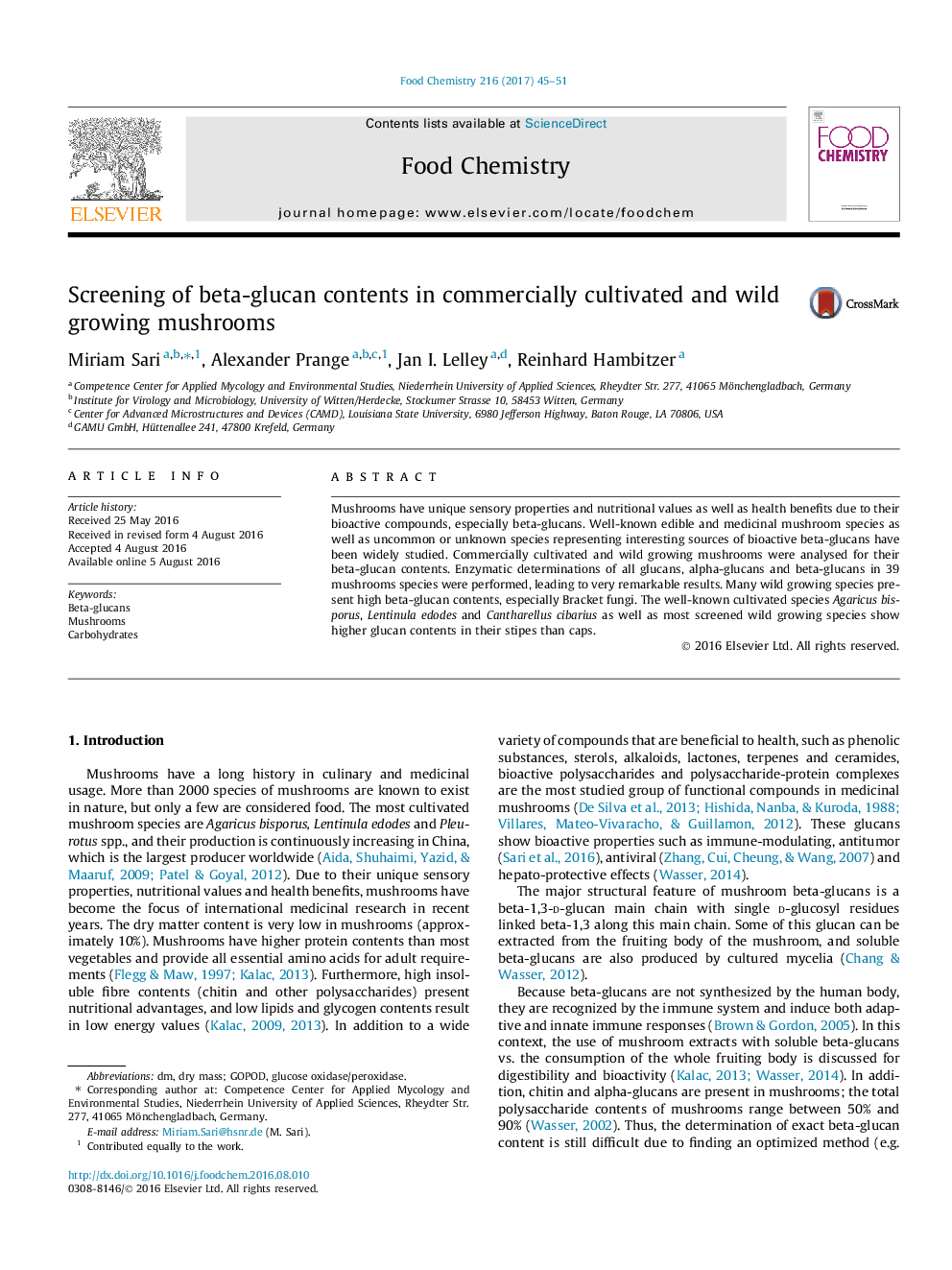| Article ID | Journal | Published Year | Pages | File Type |
|---|---|---|---|---|
| 1183048 | Food Chemistry | 2017 | 7 Pages |
•Cultivated and wild mushrooms were analysed for their beta-glucan contents.•Many wild growing species present high beta-glucan contents.•Especially Bracket fungi have much higher β-glucan contents than cultivated fungi.•Mushroom stalks usually have higher beta glucan contents than caps.
Mushrooms have unique sensory properties and nutritional values as well as health benefits due to their bioactive compounds, especially beta-glucans. Well-known edible and medicinal mushroom species as well as uncommon or unknown species representing interesting sources of bioactive beta-glucans have been widely studied. Commercially cultivated and wild growing mushrooms were analysed for their beta-glucan contents. Enzymatic determinations of all glucans, alpha-glucans and beta-glucans in 39 mushrooms species were performed, leading to very remarkable results. Many wild growing species present high beta-glucan contents, especially Bracket fungi. The well-known cultivated species Agaricus bisporus, Lentinula edodes and Cantharellus cibarius as well as most screened wild growing species show higher glucan contents in their stipes than caps.
